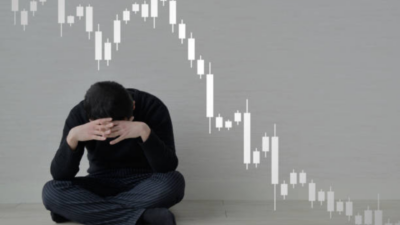Why investors should beware the Trump bump
So far, markets have given a big thumbs up to the idea of another Trump presidency, with investors enthusiastic about the prospect of corporate tax cuts and effectively discounting the effects of possible tariffs and trade wars.
But while “some positive effects may materialise from a Trump presidency”, Yarra Capital thinks investors should temper their expectations, and that they’ll likely be staring down a higher debt, higher inflation and lower growth environment in 2025.
“Every cycle is different, yet expectations for another strong year for global equities look misplaced,” writes Tim Toohey, head of macro and strategy at Yarra. “Much of the global outlook and the direction of financial markets in 2025 will be tied to the Trump 2.0 administration’s policies, the response of China and other tariff-targeted nations and the risk of escalation of conflicts in the Ukraine and Middle East.
“On balance, we think markets will continue to give an optimistic assessment of Trump’s return to the White House into early 2025, but ultimately we expect a rotation into bonds progressively through the remainder of the calendar year.”
Not even Trump knows what policies will define his presidency, and markets will likely be more volatile and reactive given his “predilection” for shock announcements. When it comes to his promise of slashing the US deficit from 7 per cent to 3 per cent of GDP, the numbers don’t add up – there’s little prospect that he can cut defence or entitlement expenditure enough to get near his target, or drive sufficient economic growth to drive a tax revenue windfall.
“Either the deficit will not fall, or spending and tax cuts plans will be watered down materially,” Toohey writes. “Given the relatively orderly reaction in bonds, the bond market appears to be assuming that Trump will find savings elsewhere or that the size of the spending promises will be watered down dramatically. However, if you reduce the size of the fiscal package – or unleash Elon Musk to cut trillions from fiscal programs – then the US consumer will see all of the inflationary aspects of the tariff policies and less fiscal stimulus to drive economic growth.”
Trade policy “is not a zero sum game” either. Lifting tariffs in one country can lead to tit-for-tat retaliation that causes price increases and uncertainty and reduces investment, employment and global economic growth. Trump’s proposed tariffs on Canada and Mexico are part of his objective to reduce illegal immigration and drug importation – objectives that go beyond addressing perceived trade balances. Placing tariffs on neighbouring countries responsible for crucial raw materials, food and auto industry parts is “obviously inflationary”.
“Tweets are not policy, but it is clear that Trump’s intention is to cause as much discomfort as possible for trade partners until some of his objectives are met,” Toohey writes. “Some countries can be expected to retaliate proportionately, some will seek to arrive at a compromise and some, including Australia, will largely be spectators and collateral damage in the wave of uncertainty that such policies will unleash.”
In the nearer term, Toohey expects that loose US financial conditions will inspire some economic and EPS upgrades before Trump’s policies come down hard on future growth expectations.
“As such, equities may remain in favour in the early part of 2025, however, we expect sentiment will turn before we reach mid-2025.” Toohey said. “In the interim we expect bonds to bake in higher inflation risks and renewed fears of excessive debt issuance in early 2025, providing an opportunity to lift bond holdings in the remainder of 2025.
“In short, it’s a case of sticking with offshore equities into early 2025, leaning back towards domestic market in anticipation of China stimulus and deeper-than-expected RBA rate cuts, before looking for opportunities to lift bonds to an overweight position through 2H25.”











